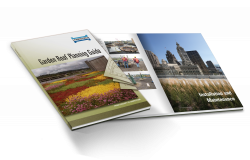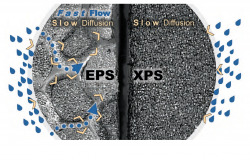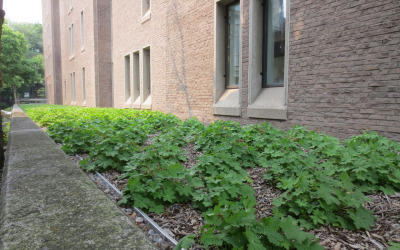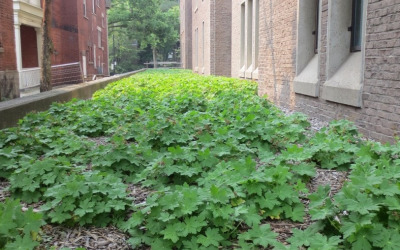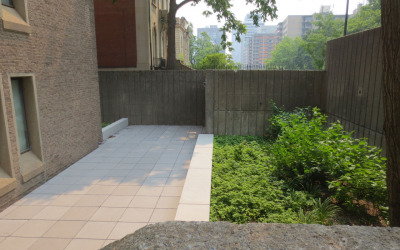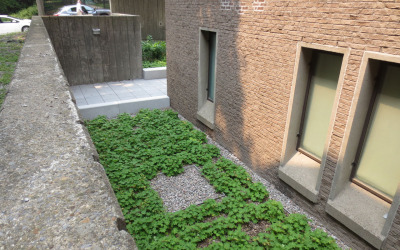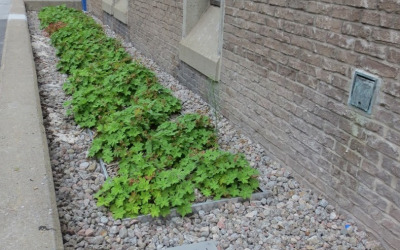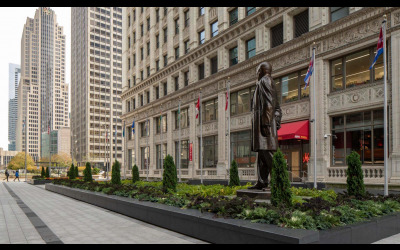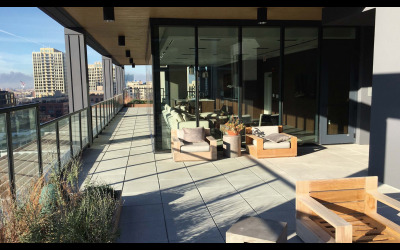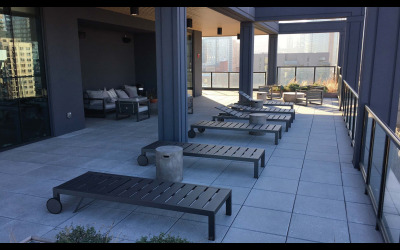American Hydrotech lance sa troisième édition du Guide sur la conception de son système de toiture végétale Garden Roof
CHICAGO, ILLINOIS (18 décembre 2013) American Hydrotech Inc., chef de file reconnu pour le développement de produits d’imperméabilisation et de toiture, a publié aujourd’hui la troisième édition de son guide sur la planification d
Absorption d'humidité dans l'isolant en polystyrène: Effets sur les valeurs R de la conception en service
L'absorption d'humidité est un concept familier. Il est facile de comprendre les mécanismes d'absorption d'humidité dans les isolants en polystyrène. Malheureusement, certaines allégations de performance d'isolation peuvent être trompe
Stress signs for your extensive Garden Roof: What to look for?
Its summer, and in many parts of the country that means hot and dry weather, which can be the most stressful part of the year for your Garden Roof. There are a number of signs which can help you gauge the stress level of the vegetation on the roof. If you know what to look for, you can take the proper steps to resolve the issues before the roof sustains long term damage.
Vegetation Signals

RECEDING VEGETATION – Many extensive plants, whether they be sedums, perennials, or native grasses have a tendency to recede when stressed. Though some this is normal for some species during times of stress, if left unchecked it can be fatal for plants on the roof. Extensive vegetation, whose media substrate can be thinner, and thus dry out more quickly and become warmer, and have a disadvantage to their at-grade counterparts.
BURNT or SINGED VEGETATION – This often occurs either at the perimeters of the roof where vegetation directly adjacent to hardscape - which can carry a higher temperature, or the result of reflective light. If possible, irrigation should be increased in these areas to offset some of the heat. If the area remains an issue, measures should be taken to incorporate vegetation free zones (with cooler temperatures) for the problematic areas.
Media Signals

DRY MEDIA – Areas throughout the roof should be checked for moisture. If there is no dampness to the media, irrigation should be increased. Irrigation settings will vary due to region and plant material.
As with all Garden Roof projects, a regular maintenance schedule is key to long term, sustained success. For specific questions and concerns, please contact your Local Hydrotech Representative or the Garden Roof Department.
What is the minimum slope required for Monolithic Membrane 6125®?
Technically, Monolithic Membrane 6125® does not require the deck to be sloped. As a monolithically applied material that has no seam, the membrane is designed to be in fully submerged conditions indefinitely and be fully guaranteed for watertightness.
What are my surfacing options?
For typical Protected Membrane Roof (PMR) applications, STYROFOAM™ insulation may be surfaced with stone ballast, architecturally finished concrete paver, a concrete topping slab, or our Garden Roof® components.
- Read more about What are my surfacing options?
- Log in to post comments
What is the weight of a Garden Roof?
It depends on the type of assembly and the depth of the soil. Saturated Extensive Garden Roofs can range from 110 to 215 kg/m2 (22-45 pounds/SF).Saturated Semi-Intensive Garden roofs range from 170 to 440 kg/m2 (35-90 pounds/SF), and saturated Intensive Garden Roofs can be anywhere from 170 kg/m2 (35 pounds/SF) up to whatever weight the structure can safely hold. Weights will vary by region and design intent.
- Read more about What is the weight of a Garden Roof?
- Log in to post comments
What size can the paver achieve if considering center spacing?
A 610 mm X 610 mm X 45 mm square paver, when installed with any of Hydrotech’s accessories (4.7 mm spacing) will equal 614.7 mm on center.



